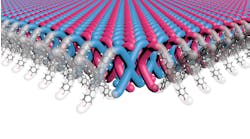The number of hazard assessment tests carried out on animals since the European Union (EU) registration, evaluation, authorization and restriction of chemicals (REACH) initiative came into force in 2006 could top 11 million following revised regulation.
This is according to a study published in July by the Johns Hopkins University Center for Alternatives to Animal Testing (CAAT), Baltimore, Maryland, and the University of Konstanz, Germany (CAAT-Europe).
Using data supplied by the EU’s European Chemicals Agency (ECHA), Helsinki, the researchers found that 4.2 million hazard assessment tests have been performed on animals since REACH’s launch. Of these, 1.3 million are currently being used in ongoing studies.
An additional 3.5–6.9 million animal tests are expected due to a revision proposed last year that aims to align chemical rules with the EU’s ambition for safe, sustainable chemicals that preserve the internal market and protect health and the environment.
However, animal-free, alternative test methods were found to be rarely used. So-called read-across methods, which predict toxicity from comparisons with structurally similar, already tested chemicals, were rejected in 75% of cases, the study noted.
“There is a long road ahead toward the ultimate replacement of animal testing.”
In response, the researchers from Konstanz and Baltimore advocate the use of animal-free alternative methods called new approach methodologies (NAMs).
“Some of these new methods are not only suitable for large-scale chemical screenings but also provide more meaningful results than animal testing, as the chemicals are tested on human cells — naturally in a petri dish,” noted Thomas Hartung, director of the CAAT-Europe and professor of pharmacology and toxicology at the University of Konstanz.
“Animal-free alternative methods are available for an increasing range of test purposes. The goal must be to adapt the legislation to the current state of scientific knowledge,” added Marcel Leist, professor of in-vitro toxicology at Konstanz and co-director of the CAAT-Europe.
The CAAT researchers emphasize the importance of bringing scientists, national and international authorities, and industry together to advance the introduction of alternative methods.
Their call came a month after an ECHA workshop to consider how best to develop an assessment framework that both reflects scientific progress and incorporates NAMs into the REACH process.
The workshop looked at strategies to enable faster progress toward an animal-free regulatory system — a situation the EU committed to over a decade ago.
However, the ECHA must reconcile two — for now at least — apparently contradictory situations. On the one hand, the organization is committed to improving the safety assessment of chemicals to promote innovation in safe and sustainable products.
On the other, while it recognizes NAMs are not a one-for-one replacement for current testing methods, the ECHA also acknowledges the need to build confidence in the chemical industry that NAM-based safety assessments can be as effective as animal testing.
So, the workshop was used as an opportunity to build a common understanding among all industry stakeholders of what NAMs can achieve in the short and long term.
“We don’t believe that [protecting] health and the environment versus no animal testing is an either/or situation. We think we can do both,” noted ECHA executive director Sharon McGuinness.
Representing the European Chemical Industry Council (Cefic), Chantal Smulders, who is also Shell’s global head of product safety science and regulatory advocacy, presented a comprehensive four-point action plan to facilitate a responsible transition, increase acceptance and foster confidence in the application of NAMs.
“The future of regulatory testing is animal-free. One day soon, we can get there if we put in place the right regulatory framework and support,” she noted.
Other speakers emphasized the need for a common and agreed-upon international roadmap for NAMs’ adoption. This, they said, must have clear, concrete and achievable milestones, plus data reporting, sharing and interpretation.
“Standardization is so important as it allows regulators to become more familiar with elements of the methods, rapidly assess adequacy of the information, and easily share and link information to existing sources of information on chemicals,” emphasized Smulders.
Summing up the meeting, Georg Streck, REACH policy officer, said, “There is a long road ahead toward the ultimate replacement of animal testing, but we believe that by developing a framework, creating a long-term vision, ensuring international harmonization, and improving information on uses and exposure, we can pave the way for a safer and more sustainable future in chemical safety assessments.”



